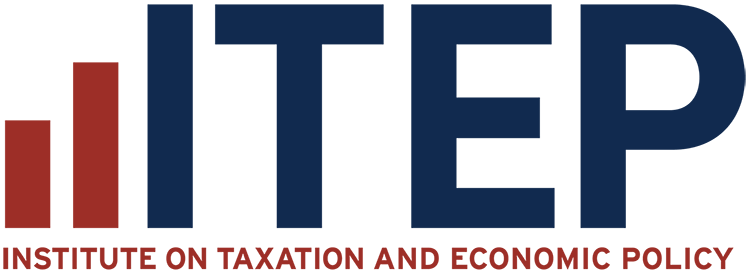
ITEP's Research Priorities
- 2025 tax debate
- Blog
- Cannabis Taxes
- Corporate Taxes
- Corporate Taxes
- Earned Income Tax Credit
- Education Tax Breaks
- Estate Tax
- Federal Policy
- Fines and Fees
- Immigration
- Income Taxes
- Inequality and the Economy
- ITEP Work in Action
- Local Income Taxes
- Local Policy
- Local Property Taxes
- Local Refundable Tax Credits
- Local Sales Taxes
- Maps
- News Releases
- Personal Income Taxes
- Property Taxes
- Property Taxes
- Publications
- Refundable Tax Credits
- Sales, Gas and Excise Taxes
- Sales, Gas and Excise Taxes
- SALT Deduction
- Select Media Mentions
- Social Media
- Staff
- Staff Quotes
- State Corporate Taxes
- State Policy
- State Reports
- States
- Tax Analyses
- Tax Basics
- Tax Credits for Workers and Families
- Tax Credits for Workers and Families
- Tax Reform Options and Challenges
- Taxing Wealth and Income from Wealth
- Trump Tax Policies
- Who Pays?
Arizona Center for Economic Progress: Using Increased Revenues from Conformity on More Tax Cuts is Fiscally Irresponsible
July 11, 2019
Arizona Should Use Increased Revenues to Prepare for Next Recession Instead of Giving Tax Cuts While a recession does not appear imminent, the current economic expansion began in June 2009 and in July will become the longest economic expansion in American history at 121 months. Given this and the impossibility of predicting when the next […]
MarketWatch: Here’s What 2020 Democratic Candidates Have Said About Universal Basic Income
July 11, 2019
Harris’s proposal would cost more than $270 billion in 2020, according to an estimate by the Washington, D.C.-based Institute on Taxation and Economic Policy. Read more
Missouri’s Creative Approach to Ending the “Race to the Bottom” in State Business Taxes
July 10, 2019 • By Matthew Gardner

Each year, state and local governments spend billions of dollars on targeted tax incentives—special tax breaks ostensibly designed to encourage businesses to relocate, expand or simply stay where they are. A law enacted by the Missouri legislature creates a template for states to work bilaterally to put the brakes on the “race to the bottom” in state business taxes.
Daily Progress: Opinion/Commentary: New IRS Rule Narrows Tax Loophole in Virginia
July 7, 2019
First, people and businesses making stock contributions, rather than cash, may still be able to profit from their donations through avoidance of capital gains taxes. A fix suggested by the Institute on Taxation and Economic Policy is to require taxpayers to pay capital gains tax if they receive a large state tax credit as compensation […]
The Washington Post: States Are Doing It. So Why Hasn’t Congress Increased the Federal Gas Tax?
July 6, 2019
All told, 31 of the 50 states have raised or reformed their motor fuel taxes during the past decade, according to the Institute on Taxation and Economic Policy. What’s more, 22 states now have variable-rate policies in place to make sure that inflation does not erode this crucial revenue stream. In so doing, they are […]
Public News Service: Deadline Today for WA Initiative Requiring Voter Approval for Tax Increases
July 5, 2019
Taxes took center stage because of a finding that Washington has the most regressive tax code in the country. According to the Institute on Taxation and Economic Policy, people in the top 1% pay 3% or less of their income in taxes, while those in the bottom 20% pay nearly 18%. Read more
CT Mirror: Gasoline Taxes Are on the Rise — Just not in CT
July 5, 2019
Twelve states ordered gasoline tax hikes that took effect this week, according to the nonprofit Institute on Taxation and Economic Policy (ITEP). While many policymakers say fuel levies are on the way out, the latest increases mean 31 out of 50 states have raised gasoline taxes at least once this decade, according to ITEP. Read […]
The American Prospect: Without Congressional Input, Trump May Further Widen the Gap Between Rich and Poor
July 3, 2019
“This is just another tax break for rich people,” says Steve Wamhoff, director of federal tax policy at the Institute on Taxation and Economy Policy, who authored a blog post on the policy implications of such a proposal. But even addressing whether the proposal makes economic sense raises serious red flags. Read more
Business Insider: Gas and Diesel Prices Rose at the Worst Possible Time for Drivers in the US and These States Are Being Affected Most
July 3, 2019
For some states, the gas tax increase has been long delayed. Some states have postponed this increase for several years due to the political challenges, Carl Davis, a research director at the Institute of Taxation and Economic Policy, told Business Insider. Davis is an expert in transportation infrastructure funding. “Lawmakers don’t want to take a […]
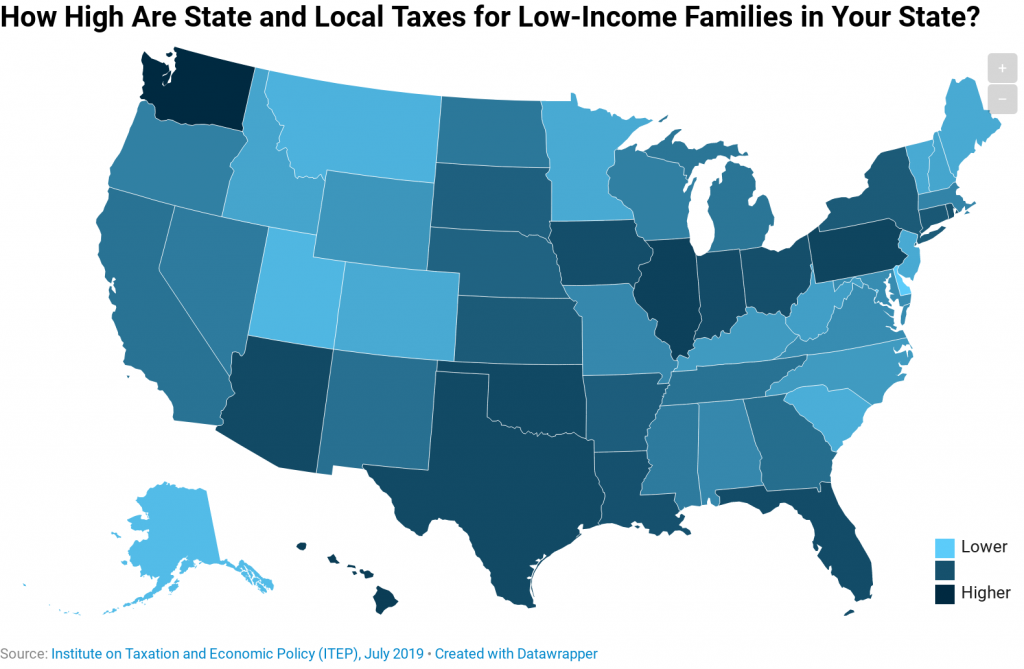
No two state tax systems are the same, but 45 states have one thing in common: Low-income residents are taxed at a higher rate than the top 1 percent. This map shows the effective tax rates for the lowest-income 20 percent in each state--ranging from a high of 17.8 percent in Washington to a low of 5.5 percent in Delaware.
Pacific Standard: Developers Aren’t Reporting How They’re Using Tax Incentives Meant for Low-Income Areas
July 2, 2019
Even for those who have tracked the bill closely, the reporting process remains opaque. “This bill was thrown together so incredibly quickly—there weren’t hearings on it, these types of questions weren’t fleshed out in the way they should have been, so a lot of how this was put together remains a mystery,” says Carl Davis, […]
The Wall Street Journal: From Gas Taxes to Vaping Rules, New State Laws Take Effect Across U.S.
July 2, 2019
Drivers in a number of states will now pay higher taxes on gas as part of a broader push to fund infrastructure improvements. In Illinois, the gas tax has doubled to 38 cents from 19 cents, making it the largest increase for any of these states, according to the Institute on Taxation and Economic Policy, […]

Mercury is rising, presidential primary debates are underway and most state legislative sessions have adjourned for summer. Whether you’re curling up with a good book (or your favorite e-Reader) or looking for a new television show to binge-watch, check out these recommendations on ITEP’s Summer Reading (and Watching) List.
Bloomberg: Horse Racing Tax Credit Backers Not Deterred by House Setback
July 1, 2019
Matthew Gardner, a senior fellow at the Institute on Taxation and Economic Policy, said there are sensible reasons to ask whether these tax breaks are more generous than they should be. ITEP is among organizations that have criticized the practice of extending temporary tax break and asked Congress to do away with them. “This sounds […]
Nevada Business: Taxes and Nevada: The Give and Take
July 1, 2019
Many of those breaks and loop holes were left in place by the new policies, said Steve Wamhoff, director of federal tax policy at the Institute on Taxation and Economic Policy. “There are a lot of breaks and loopholes that allow a company not to pay,” Wamhoff told Yahoo Finance. “People, when they think of […]
Bloomberg: Gas Tax Hike Takes Effect in Five States This Month
July 1, 2019
All state gas taxes are tacked onto the federal government’s 18.4 cent-per-gallon levy, according to the Institute on Taxation and Economic Policy. Read more
Gaps in Sales Tax Collection Linger at Amazon.com and Among Other E-Retailers
July 1, 2019 • By Carl Davis
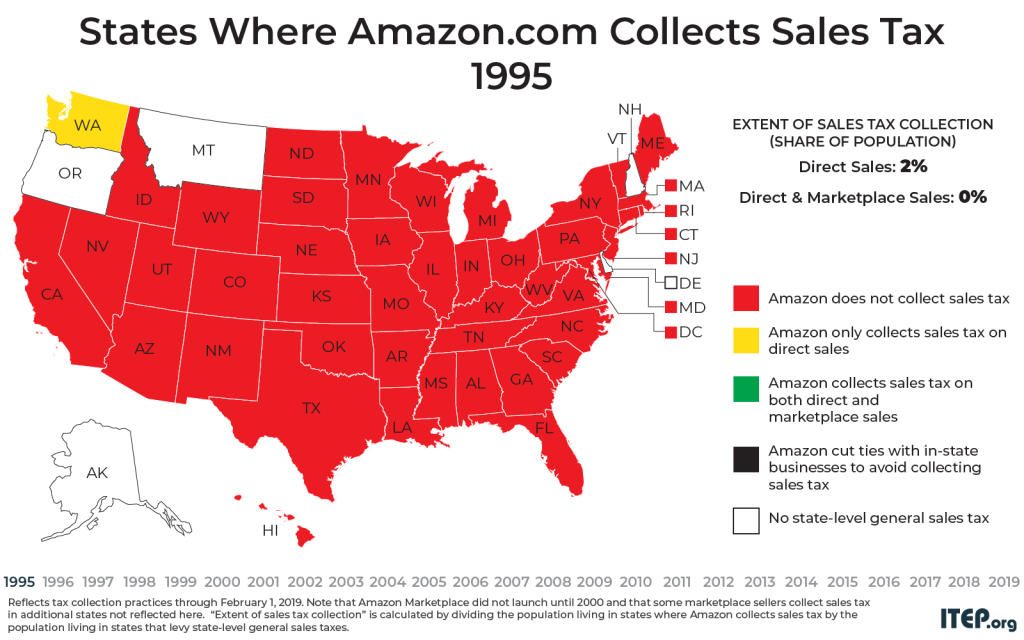
The last few years have brought big changes to sales tax collection for purchases made at Amazon.com and other e-retail websites. As recently as 2011, Amazon was only collecting sales tax on its direct sales in five states – a fact that gave the company a competitive edge over brick and mortar stores during a critical time in its growth. Today, Amazon is collecting state-level sales taxes on all its direct sales, but it still usually fails to collect sales tax on the large volume of sales it makes through the “Amazon Marketplace.” This points to a broader problem in…
Why Trump Administration’s Plan to Index Capital Gains to Inflation Is Just Another Giveaway to the Wealthy
June 28, 2019 • By Steve Wamhoff

The White House is reported to be planning to unilaterally adjust the way capital gains are assessed to benefit the wealthiest Americans. The proposal would adjust capital gains for inflation, reducing taxes disproportionately for the wealthiest households who own most assets by limiting their taxable gains to those above and beyond the inflation rate.
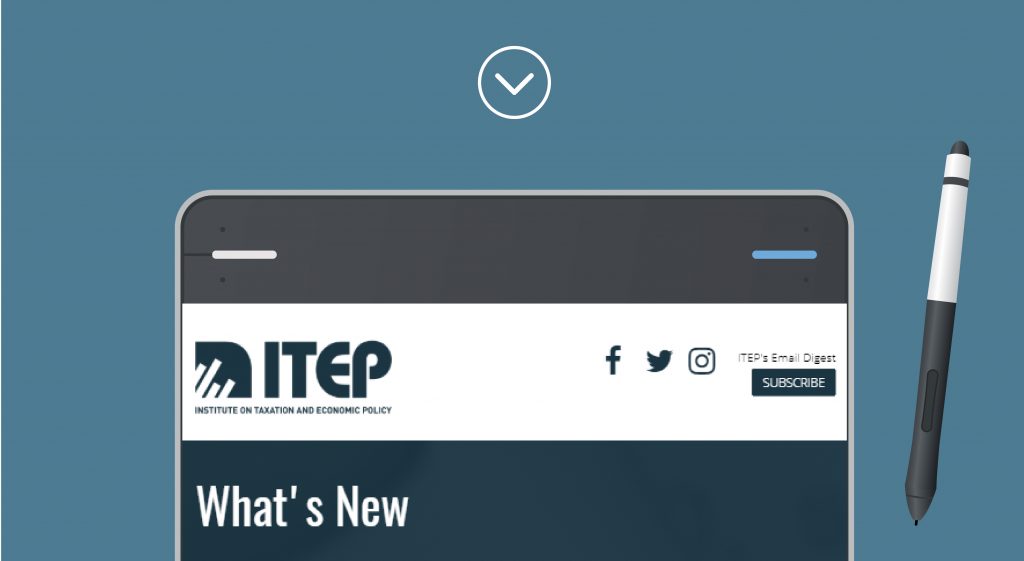
A summary of ITEP reports, analyses and blogs this month.
Wealth Tax Is Supported by Basically Everyone Who Is Not a Politician
June 27, 2019 • By Steve Wamhoff

A February survey found that 61 percent of registered voters supported a wealth tax proposal, including 51 percent of Republican voters. And it’s not just the non-rich wanting to tax the very rich. A June survey found that 60 percent of millionaires support the idea.
Travelers in 12 States Will Pay More in Gas Taxes Beginning Monday
June 27, 2019 • By Carl Davis

Drivers in 12 states who hit the road during this summer driving season will be paying more in gas tax beginning Monday, July 1. While the federal gas tax has remained stagnant for nearly 26 years, many states have stepped up and increased their taxes so they can raise revenue to fund infrastructure and other projects. California, Indiana, Maryland, Michigan, Montana, Nebraska, Ohio, Rhode Island, South Carolina, Tennessee and Vermont all will raise their gas taxes.
Gas Taxes Rise in a Dozen States, Including an Historic Increase in Illinois
June 27, 2019 • By Carl Davis

On July 1, 12 states will boost their gasoline taxes and 11 will boost their diesel taxes. The reasons for these increases vary, but they’re generally intended to fund maintenance and improvement of our nation’s transportation infrastructure–a job at which Congress has not excelled in recent years.
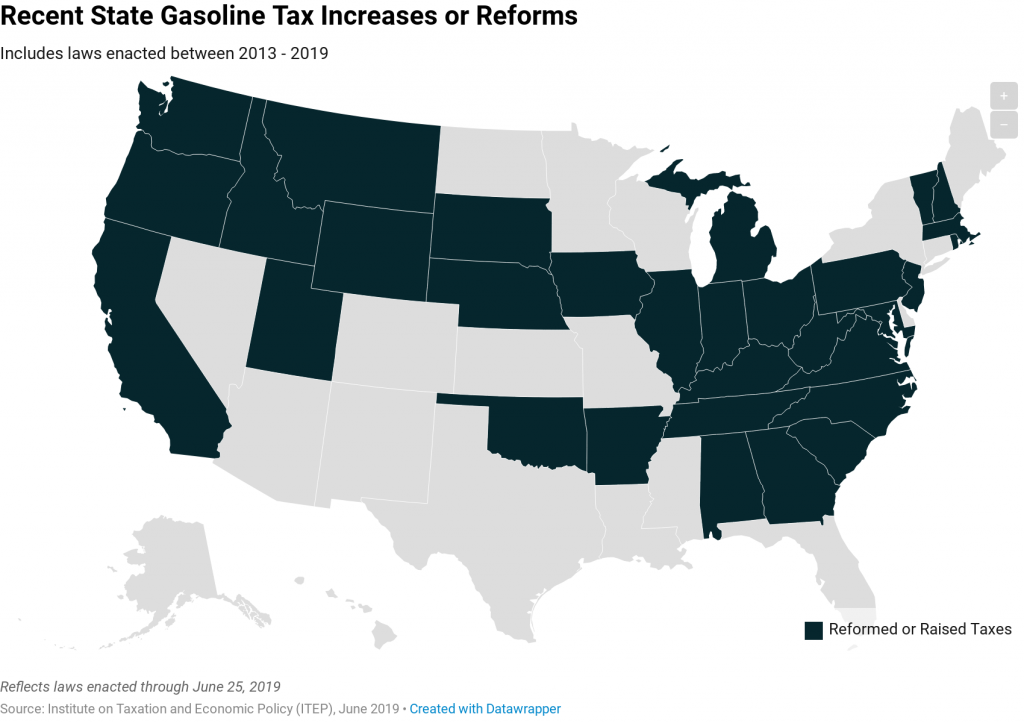
Gas taxes are the most important revenue source that states have available to pay for transportation infrastructure. In recent years, state lawmakers across the country have increasingly agreed that gas taxes must be increased to fund the maintenance and improvement of their infrastructure networks.
Ohio now enjoys the distinction of being the 30th state to raise or reform its gas tax this decade, and the third state to do so this year, under a bill signed into law by Gov. Mike DeWine. While state tax policy can be a contentious topic, there has been a remarkable level of agreement on the gasoline tax. Increasingly, state lawmakers are deciding that outdated gas taxes need to be raised and reformed to fund infrastructure projects that are vital to their economies. These actions are helping reverse losses in gas tax purchasing power caused by rising construction costs…
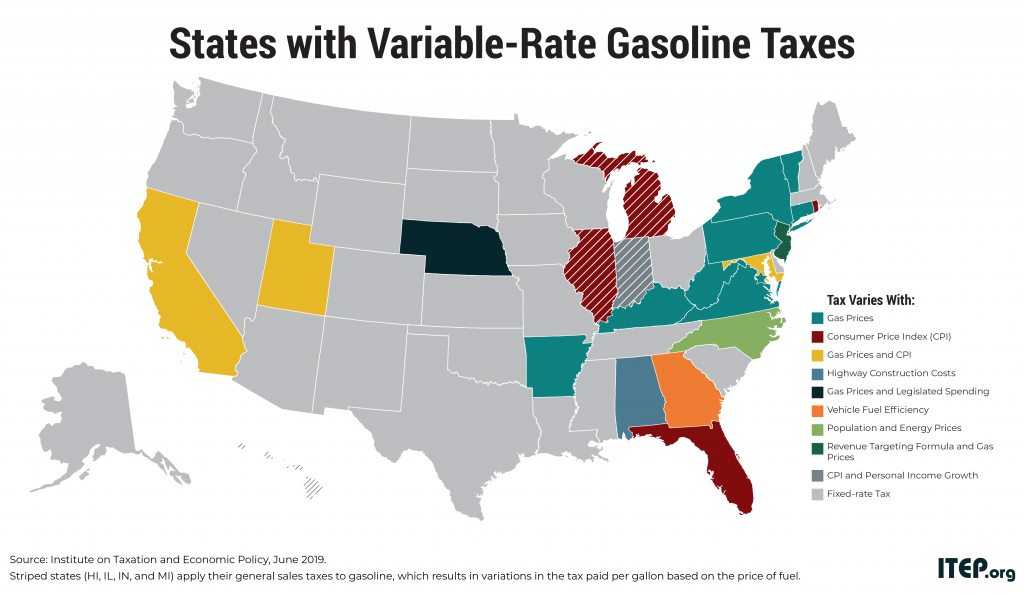
The flawed design of federal and state gasoline taxes has made it exceedingly difficult to raise adequate funds to maintain the nation’s transportation infrastructure. Twenty-eight states and the federal government levy fixed-rate gas taxes where the tax rate does not change even when the cost of infrastructure materials rises or when drivers purchase more fuel-efficient vehicles and pay less in gas tax. The federal government’s 18.4-cent gas tax, for example, has not increased in over 25 years. Many states have waited a decade or more since last raising their own gas tax rates.
